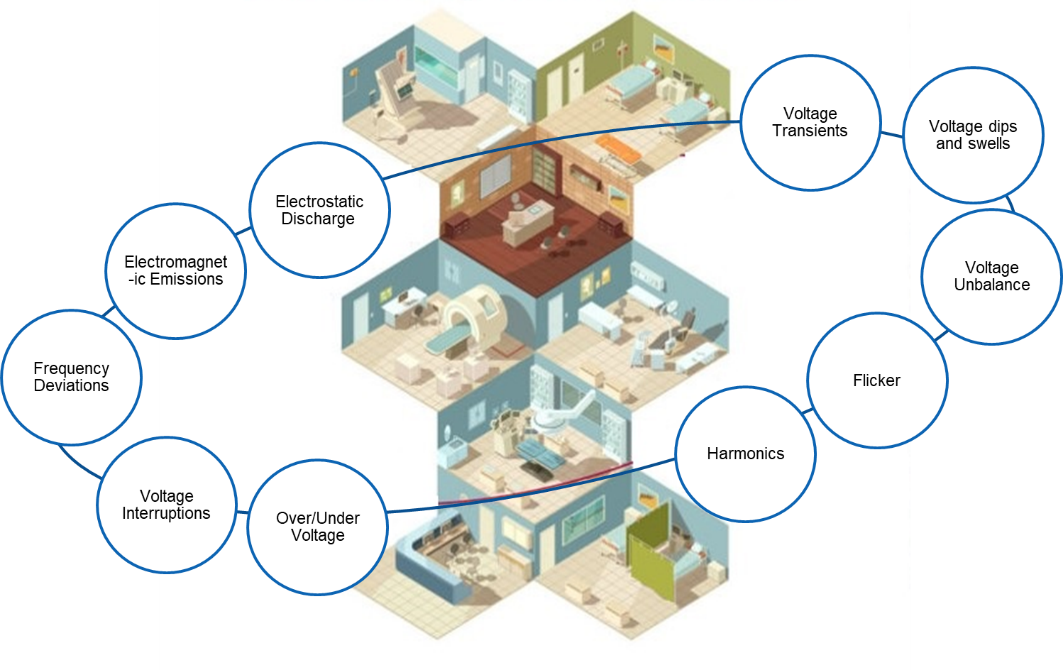As we discussed in our earlier blog how the working principle of SPD is different from Fuse. Read Solutions to avoid Surges in Industrial and Commercial power systems to understand the basic difference between SPD & Fuse.
Further more, the Power line SPD and Data line SPDs have distinct selection principles than fuse/MCBs, as well as different selection criteria. Data line SPDs include all SPDs other than power line application- viz. Communication, Instrumentation, Voice, data, Ethernet, RS 485, RS 422, etc.
Power Line-Most of the power line protectors used in AC power low voltage applications, especially those used in Main DB & Sub DB are connected parallel to the load, so that, they can be used without bothering about the load current. Low voltage means any AC RMS voltage from 1V to 1000 V and DC up to 1500 V.
Data Line-All the data line protectors are connected in series to the load, though the basic protection components- Viz. Gas Discharge tubes (GDT), Metal Oxide Varistors (MOV) which is basically Zinc oxide based and Silicon Avalanche Diodes (SAD) or Surge Diodes or Transzorbs are always connected in parallel. In data line SPDs, the series component- generally resistors or inductors determine the load current that can pass through the data line SPDs. Resistors and in some cases the tracks in PCB are used in high frequency applications whereas Inductors are used in low frequency application.
POWER LINE SPDS SELECTION CRITERIA.
While selecting SPD’s you need to consider following criteria,
1. Voltage Protection level (Up) based on Voltage withstanding level of the equipment (Uw) - Ensure that Up is lower than Uw in all cases, which only ensures protection of equipment.
2. Nominal Discharge current
3. Maximum Discharge Current
4. Impulse current ( for Class I SPDs only)
5. Tested as per IS/IEC 61643
- Low-voltage surge protective devices–Part 11: Surge protective devices connected to low-voltage power systems
-Requirements and test methods for Class 1 (Zone 0 to 1) , Class 2 (Zone 1 to 2) & Class 3 (Zone 2 to 3)applications
6. Response time
Other features to take care for ease of maintenance like
1.Pluggable modules
2. Local indication of failure
3.Remote indication of failure
4. DIN-RAIL mounting
Data line SPDs selection criteria is based on sub category, but all tested as per IS/IEC 61643- 21 for D1 (based on 10/350 µS), C2 (based on 8/20µS), C1 (based on 8/20µS) IS/IEC 61643- Low voltage surge protective devices - Part 21: Surge protective devices connected to telecommunications and signalling networks - Performance requirements and testing methods.
A) Instrumentation line protection SPDs selection criteria.
1. Control room side SPDs- DIN rail mountable, sleek, spring loaded terminals
2. Field side SPDs with respect to 2 wire & 4 wire applications. For 2 wire, direct transmitter mountable 1/2” NPT screw type SPDs.
B) RS 232 line SPDs.
Suitable for 9 PIN, 15 PIN & 25 PIN SPDs. (male- male), (female-female) & (male- female)
C) RF Co-axial line protection SPDs
1.Signal amplitude
2.Frequency band of operation
3.Connector type
4.Gender type
5.Voltage protection level
6.Insertion loss/ return loss/NEXT- Near End Cross Talk
All of the preceding must feature in the Electrical Safety rules and regulations. Though a selection of SPDs is important, installation is more crucial because SPD installation is different from Fuse/MCB installation.
For more information, contact us at [email protected]"




